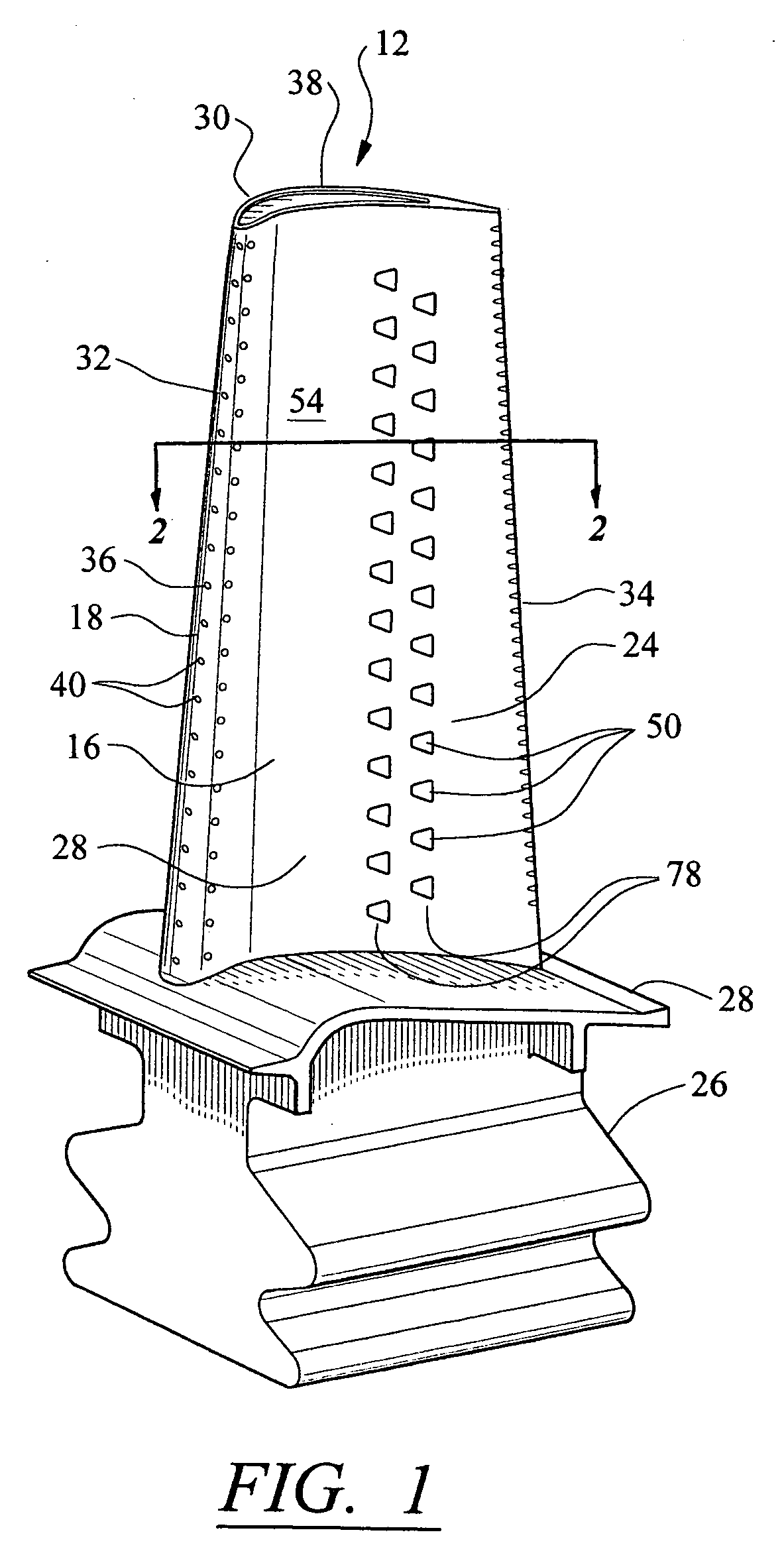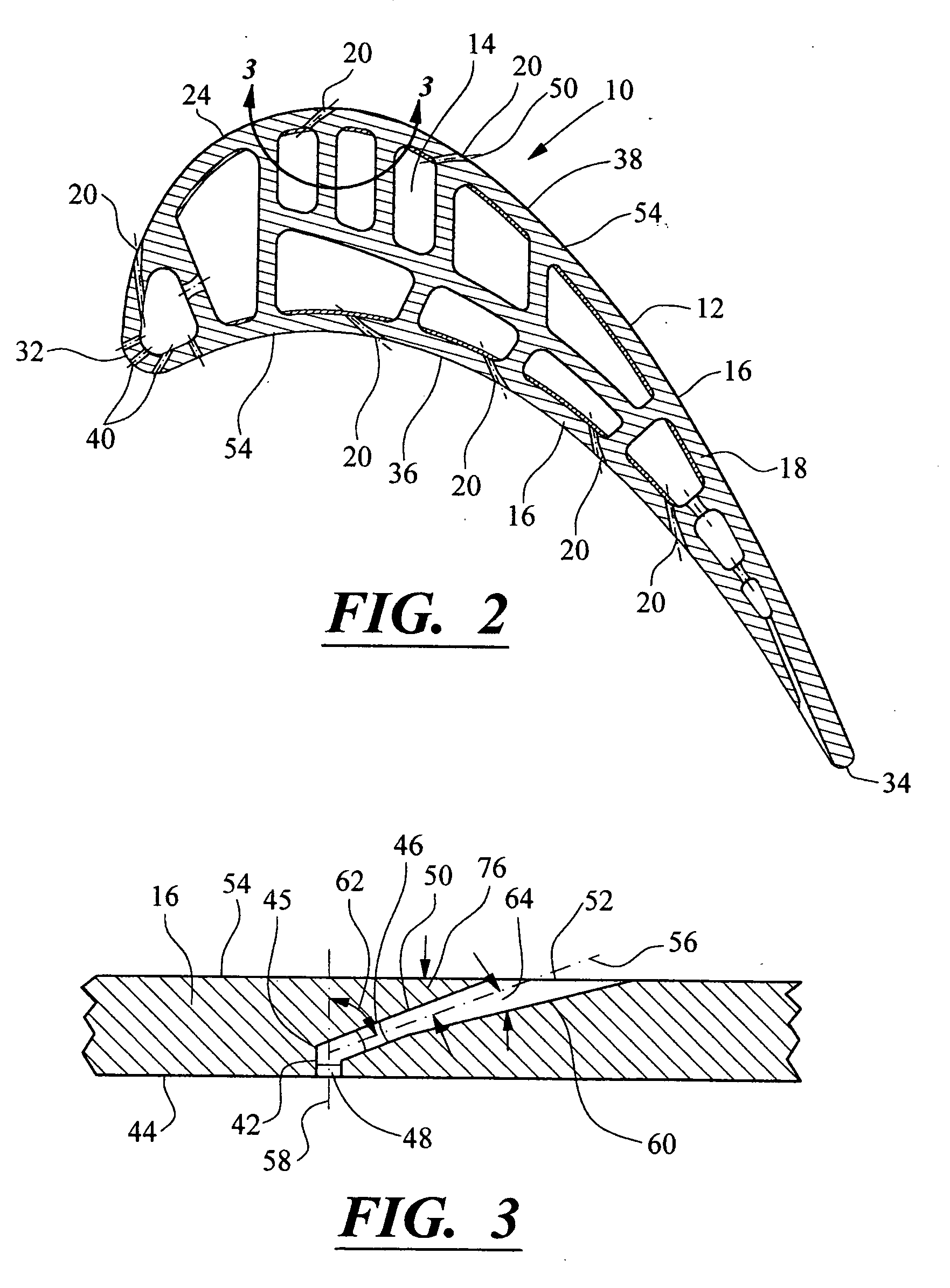Turbine airfoil cooling system with elbowed, diffusion film cooling hole
a cooling system and diffusion film technology, applied in the field of turbine airfoils, can solve the problems of reducing the useful life of the turbine blade, reducing the likelihood of failure, and localized hot spots, so as to minimize the formation of vortices, reduce the velocity of the cooling fluid, and maximize the cross-sectional area of the film cooling hole
- Summary
- Abstract
- Description
- Claims
- Application Information
AI Technical Summary
Benefits of technology
Problems solved by technology
Method used
Image
Examples
Embodiment Construction
[0020] As shown in FIGS. 1-5, this invention is directed to a turbine airfoil cooling system 10 for a turbine airfoil 12 used in turbine engines. In particular, the turbine airfoil cooling system 10 is directed to a cooling system 10 having an internal cavity 14, as shown in FIG. 2, positioned between outer walls 16 forming a housing 18 of the turbine airfoil 12. The cooling system 10 may include an elbowed film cooling hole 20 in the outer wall 16 that may be adapted to receive cooling fluids from the internal cavity 14, meter the flow of cooling fluids through the elbowed film cooling hole 20, and release the cooling fluids into the film cooling layer proximate to an outer surface 54 of the airfoil 12. The elbowed film cooling hole 20 may be positioned at a shallower angle than film cooling holes without elbows.
[0021] The turbine airfoil 12 may be formed from a generally elongated airfoil 24 coupled to a root 26 at a platform 28. The turbine airfoil 12 may be formed from conventi...
PUM
 Login to View More
Login to View More Abstract
Description
Claims
Application Information
 Login to View More
Login to View More - R&D
- Intellectual Property
- Life Sciences
- Materials
- Tech Scout
- Unparalleled Data Quality
- Higher Quality Content
- 60% Fewer Hallucinations
Browse by: Latest US Patents, China's latest patents, Technical Efficacy Thesaurus, Application Domain, Technology Topic, Popular Technical Reports.
© 2025 PatSnap. All rights reserved.Legal|Privacy policy|Modern Slavery Act Transparency Statement|Sitemap|About US| Contact US: help@patsnap.com



